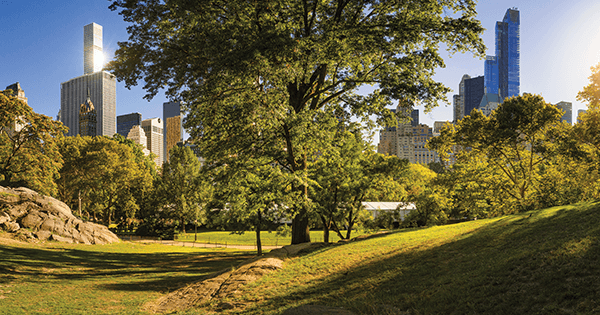

Jill Jonnes, author of Urban Forests: A Natural History of Trees and People, which will be published this fall, was a Woodrow Wilson International Center Scholar and is the recipient of several Ford Foundation grants. We asked her to consider the future of trees in the age of climate change.
1. Though few Americans realize it, we are in the middle of an imminent ecodisaster: the eventual near-extirpation of all 22 species of North American ash, a stalwart of the woods and one of our toughest, most reliable urban trees. The emerald ash borer, first identified in 2002 in Detroit, now ranks as the nation’s most lethal tree pest, having wiped out hundreds of millions of ash trees in 27 states. Scientists say it’s just a matter of time before the tiny, lustrous beetles hitch a ride on firewood (the most common vector) across the Rocky Mountains and destroy the ash trees in the West. The ash is America’s third major tree genus to be virtually destroyed by exotic pests brought in via global trade. The first, the American chestnut, was wiped out by an airborne fungus (identified in 1904) that arrived on imported live nursery stock. In 1929 came Dutch elm disease, a fungus spread by bark beetles that hid in wood veneer from France. Now as many as eight billion ash trees—including those planted to replace the elms—are dying, dead, or doomed, this time from beetles arriving on our shores in wooden shipping pallets, likely from China. Homeowners and state and local governments are shouldering the bill to remove and replace ash trees.
Why is the public paying when the shippers and merchants who introduced this problem should be held accountable? Should American lawmakers adopt what has been called “tree-SMART trade,” ending all use of solid-wood packing and pallets for cargo coming into America, a measure that global shippers such as IKEA have already taken? And should they also ban the further import of nursery stock, which can harbor other devastating diseases?
2. As American cities expanded during the Gilded Age, city planners pushed for tree-lined streets and leafy parks as public health measures. In overcrowded tenement districts where heat could be deadly, trees cooled the air. Today, researchers are discovering that urban dwellers who live near and among trees have healthier babies, display better cognitive functioning, and report less stress—no small matter when 80 percent of Americans live in and around cities. City trees and woods—which clean the air, cool urban heat islands, and capture stormwater runoff—can and should play a more important role.
Will mayors and community leaders start pushing for larger urban forests as a way to improve public health? And if they do, can new sources of funding, such as carbon-offset credits, work to boost our well-being?
3. When former New York City Mayor Michael Bloomberg’s administration began to address climate change, he was so impressed with the benefits of New York’s urban forest that he launched and helped fund a campaign to plant a million trees. To identify species that can adapt to the changing climate, J. Frank Schmidt & Son Company, the nation’s largest wholesale grower of urban trees, has funded laboratory research and field trials. A Michigan State University study found that as the temperature warmed, Chanticleer pear and swamp white oak both produced thinner leaves, which could dissipate the heat more effectively. Certain maple and honey locust cultivars responded to hotter, drier days by producing leaves with more stomata, making them more resilient. Arborists are beginning to plant for this era of more extreme weather.
With climate change upon us, will environmentalists and city leaders recognize and incorporate this living green infrastructure, one of the easiest and simplest weapons against global warming?
4. Looking at a mature oak tree, like the 25-year-old pin oak I have in my back yard, most of us appreciate how it provides shade, handy branches for passing cardinals, robins, and other birds, and plentiful acorns for squirrels. But thanks to several decades of U.S. Forest Service research, we now know some of the other services this tree delivers each year and their dollar value. Using this research, i-Tree, a public-domain software platform, reports that each year my tree saves about 230 kilowatts of electricity ($17.58), absorbs 7,700 gallons of rainwater ($75.92), and stores carbon ($17.58). I-Tree has transformed the way many city arborists plan, plant, and manage their trees.
Can this technology persuade American homeowners to see trees not as ornaments but as money-saving assets?

